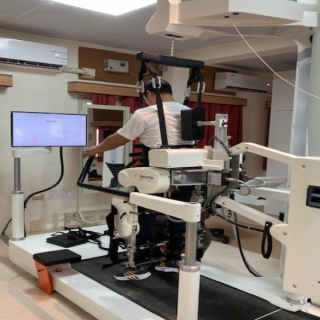Changing Lives in India with the Latest Robotic Rehabilitation Technology

in use by the Christian Medical College in Vellore,
India. ( Photo credit: Vellore Christian Medical
College Foundation)
The Physical Medicine & Rehabilitation (PMR) Department at Christian Medical College (CMC) in Vellore, India recently introduced robotic rehabilitation as part of their work in rehabilitative health care. Thanks to ASHA funding, four pieces of robotic equipment were procured—for lower extremity gait training and upper limb rehabilitation. Ten therapists and three doctors received training on the new equipment and over 150 patients have already undergone robotic therapy. The case of a 65-year-old man who had fallen down a set of stairs and lost all sensation and motor function below his waist illustrates how modern approaches and technology can dramatically alter the trajectory of patient outcomes. The man previously underwent conventional physiotherapy initially, where progress was very slow due to poor trunk control, poor hand grip, fear of falling, and neck pain. The patient was also very tall and the therapy was quite taxing for the therapists due to the physical labor involved. Using robotic gait training, the patient made significant progress and at the time of discharge was able to walk unaided. The robotic gait training accelerated improvement by a factor of 400 percent (compared to conventional therapy).

